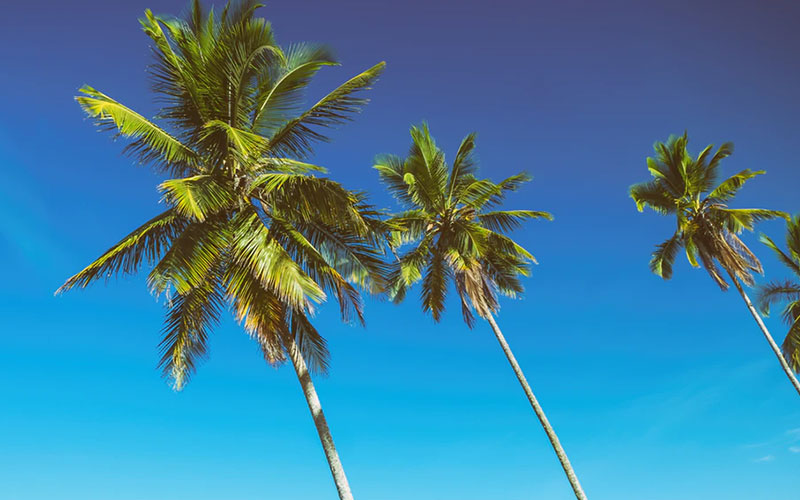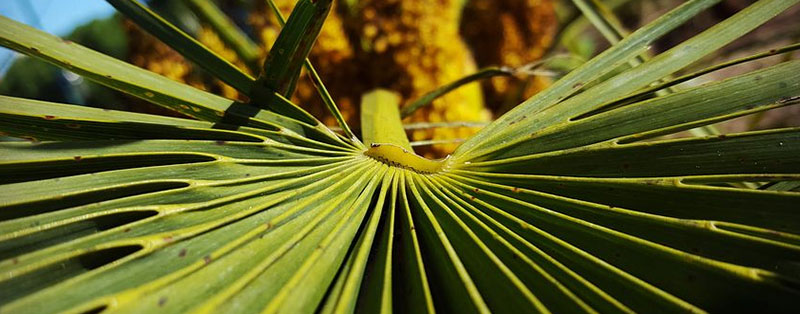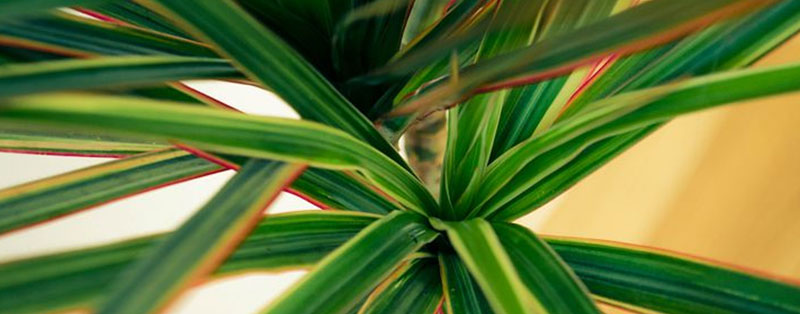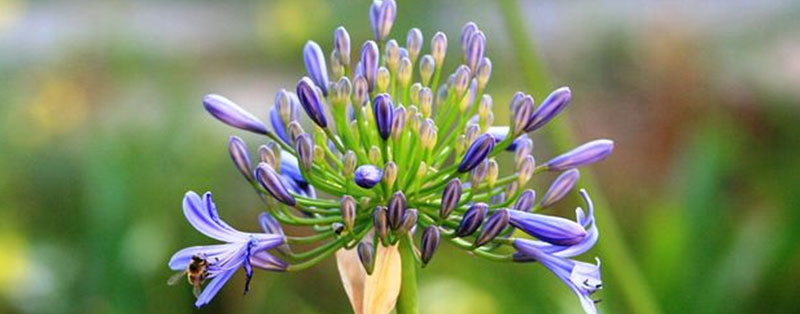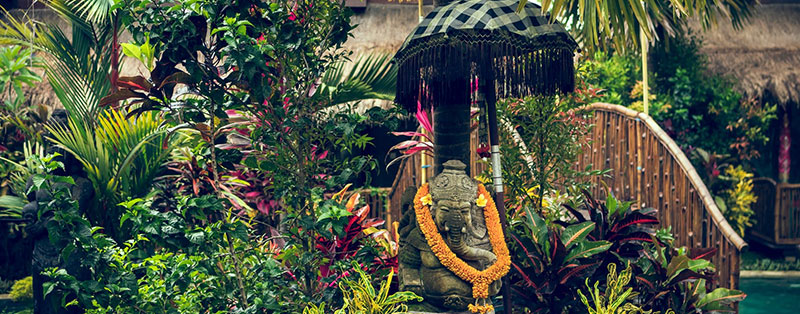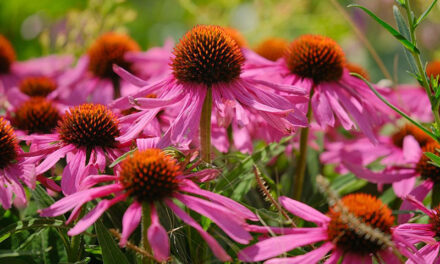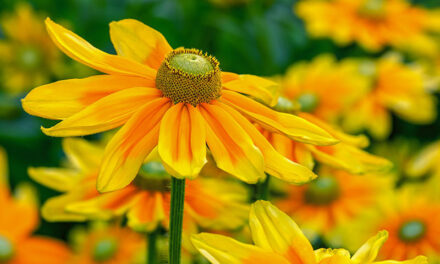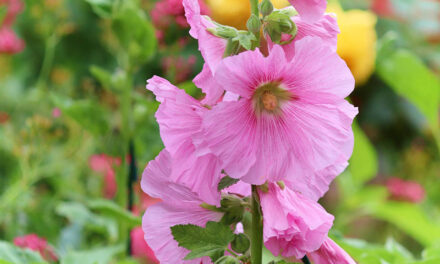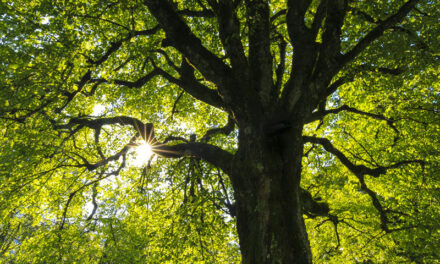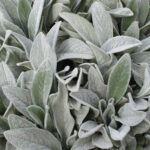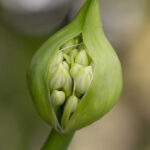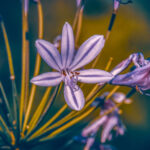Who doesn’t have that idyllic picture of summer, with all types of palm trees in the background? If you want to recreate this atmosphere in your garden, read all about types of palm trees and other exotic plants in this article.
There are about 4000 species in the Palm family. Although winter-hardy types of palm trees exist, most are found in the tropics or subtropics. The Trachycarpus Fortunei is the most well-known hardy palm species. Other Trachycarp species that are hardy are the Trachycarpus Latisectus, Trachicarpus Takil, and Trachicarpus Wagnerianus.
The Nannorrhops Ritchiana “Silver” and Chamaerops Humulis are other hardy palm species. In addition to the degree of frost, also pay attention to the moisture content of the soil and the wind at the location. If you want a palm tree to survive in a cold climate, provide the desired conditions.
What is the best palm tree care?
There are many types of palm trees. These each require different care, depending on the species. Always look for specific information for the species you have or want to purchase. In this article, I provide general care tips for all types of palm trees.
Temperature for types of palm trees
Most types of palm trees originate from a tropical climate. It is therefore logical that the palm likes a warm place in the garden. A palm tree does not like wind. So put it against a warm south wall or fence. In the summer, the plant likes to have sufficient moisture. This is in contrast to the winter when it prefers not to be in moist soil. The reason for this is that the plant doesn’t tolerate frozen roots or that there is a good chance that the roots will rot. The non-hardy varieties must be placed indoors before frost.
Light
Palms like to have a light spot. Like any plant, they need this. If they don’t get enough light, this affects the growth and vigor of the plant. Some types are suitable for darker places. The Kentia Palm is a good example of this. For a good strong plant, it is therefore important to look at the needs of the plant. When the plant comes from inside, after winter, let it gradually get used to direct sunlight. Otherwise, there is a risk of “sunburn” damage to the plant.
Humidity for types of palm trees
One of the tricky things in caring for a palm is watering it. The palm should not receive too much or too little water. You have to keep a close look at this. A good way to do this is to put your finger in the soil by the palm to feel how moist the soil is.
When the soil is dry a few inches below the surface, it is necessary to water the plant. The moisture administration is of course very dependent on the weather conditions. On a sunny, warm summer day, the plant quickly evaporates a few liters of water. You can imagine it’s necessary to water your palm daily. If the palm has a windy location, more moisture will evaporate and therefore the palm needs more water.
Humidity during winter
In the winter period, the palm tree stops growing, both the hardy and the non-hardy varieties. At that time the plant does not need water. To prevent root rot, the plant must be in well-draining soil. If your plant is in a pot, make sure that the water can drain away. A stoneware pot provides more moisture absorption and drier soil than a plastic pot. To retain some moisture, but not so much it remains in your pot, you can put hydro granules underneath the potting soil. This ensures good drainage, provided there are drainage holes at the bottom of the pot.
If your palm is placed in the garden, make sure the moisture can escape during winter. You can do this by sprinkling a bag of hydro pellets underneath the plant before planting your palm tree. You can also place the plant on a “mound”. A kind of hill, through which the water flows to lower places in the area.
In the tropics, there is high humidity. To simulate this, it is smart to spray or mist the leaf of the palm with water. Do not do this in direct sunlight, but when the sun is down or early in the morning.
Soil type
Palm trees like nutrient-rich soil. They like to receive some natural fertilizer, compost, or farmyard manure in the spring. Palms grow better if they are regularly fed with fertilizers. Slow-acting fertilizers are better for palm trees than fast-acting ones. You can stop fertilizing at the end of August. The plant will then prepare for the winter period.
Palms in a pot need more fertilizer than palms in the garden. In the open ground, the palm itself searches for useful raw materials.
Pruning types of palm trees
When the plant comes out of hibernation in the spring, you can remove the yellow, withered, and unsightly leaves by pruning the leaves. In winter, the plant still uses these leaves as shelter. In the spring, the plant will receive an extra stimulus to grow when it’s pruned.
With the Trachycarpus species, there is also a high chance that it’ll produce flowers after pruning. Leave about 10-15 centimeters of the leaves on the plant when pruning. It is best to leave the center of the plant. So prune the plant all around.
What are the characteristics of a palm tree?
When you think of a palm tree, you probably imagine a summer picture or holiday photo of a beach with a palm tree. But have you ever taken a good look at what a extraordinary tree it actually is?
The coconut palm tree (Cocos Nucifera) is called a tree, but differs essentially from the deciduous trees we encounter in nature. The most striking feature of the coconut palm is that they have no side branches. The trunk of the coconut palm is a false trunk, consisting of the leaf bases around a stem. The leaves all grow from the center of the trunk. Each of these leaves will last up to three years. The first year they are upright, the second year they are vertical on the trunk and the third year they hang down. When the leaf is used up, it falls off the tree and is replaced by new leaves that grow from the center of the trunk.
Coconuts
The most striking and well-known characteristic of this palm are the fruits, the coconuts. These are great for drinking the juice or eating the pulp. There are also all kinds of ways to use and process coconut.
The coconut is also the start of a new coconut palm tree. In nature, a coconut that has fallen from a tree into the sea washes up again on the beach. This sandy soil on the beach is extremely suitable for the coconut palm species. A seed leaf and a stem emerge from the coconut. You can see a new palm sprouting from the coconut.
In addition to the coconut palm tree, there are many different types of palm trees. The leaf of the palm varies from fan-shaped to pinnate and smooth-edged. There are palm species that will flower after a few years, or many years. These flowers are usually in a cluster. You have to be patient for it, sometimes it can take more than 10 years before a palm tree starts to flower.
As mentioned before, there are winter-hardy types of palm trees and non-hardy palms. I will introduce you to some types of palm trees.

Winter-hardy and non-hardy types of palm trees
A distinction can be made between feather palms and fan palms. The fan palm can be recognized by the fan-shaped leaf. The further palm has many individual leaves on the stem.
Types of palm trees that are winter-hardy
Trachycarpus Fortunei
Commonly known by the name Chinese windmill palm. This robust, fast-growing palm can grow up to 10 meters in perfect conditions. The bloom consists of yellow and green flowers, which are produced on large branched panicles. The plant can withstand a frost of about 15-20 degrees, depending on the moisture and the wind. At -12 degrees there is a chance that he will drop his leaves.
Trachycarpus Fortunei Wagnerianus
This ‘Wagnerianus’ is a slow-growing dwarf variety of the Trachycarpus Fortunei. The leaves are somewhat smaller and this species rarely grows to more than 5 meters in height. Because the palm tree grows a bit smaller, it can handle the wind better. He can also withstand damp conditions a little better. However, the care tip of a lot of moisture in the summer and little in the winter does apply. About -12 degrees of frost is a temperature that this palm can survive.
Trachycarpus Takil
Also known as the Kumaon palm. This trachycarpus species is one of the hardiest and largest varieties. The Kumaon palm can reach a height of up to 10-12 meters. The trunk is a bit smoother than a Trachycarpus Fortunei and the leaves are shorter and stiffer. The frost resistance is about -15 to -20 degrees.
Butia Eriospatha
This palm is a small species of Butia palm. It’s a feather palm that grows on somewhat sandy soil. It is a relatively easy palm that can withstand temperatures of -12 degrees Celsius. However, he does not like moisture at all in winter. This can cause the spears to develop mold. The spears of a palm tree are the new rolled-up leaves that start growing in the center of the plant. The height of the plant can reach about 6 meters. Naturally, this palm also likes a sunny position.
Chamaerops Humulis
The European fan palm is the only palm native to Europe. You can also use it as a houseplant. The palm can grow up to 3 meters high, but this differs greatly from tree to tree. The dwarf palm likes a sunny place and can tolerate frost up to -10 degrees Celcius. There are sharp spines on the plant, so don’t plant them close to a patio or walkway.
Jubaea Chilensis
Also known as Chilean wine palm or Chile cocopalm. In its natural habitat, the tree can reach a height of 30 meters and a diameter of 2 meters. This will probably not happen in your, but it could become a massive tree. A kind of coconuts also grows on this palm. This palm likes a sunny place and well-drained sandy soil. It is one of the best winter-hardy feather palms, but if it gets colder than -15 degrees Celcius, you should protect it against the cold.
Non-hardy types of palm trees
Most types of palm trees are not winter-hardy. You will need enough space to store the palm in a light frost-free place in winter. I always put my indoor palm (Dracaena Marginata) outside in my garden during the summer and return it to the living room in the winter.
Brahea Armata
Commonly known as Mexican blue palm or blue Hesper palm. The palm gets its name from its deeply incised blue-gray leaves. It is a slow grower and therefore extremely suitable as a container plant. The palm likes to be in the sun and requires plenty of water in the summer. In winter it is best to keep this type of palm tree dry and frost-free.
Howea Forsteriana
Also known as the Kentia palm or thatch palm, is a palm that can also be used as a houseplant. The plant has large leaves hanging like feathers. These types of palm trees can grow up to 2 meters. The leaf is dark green on the top and light green on the underside. It can also be placed in a somewhat darker place in the house or in the garden. This is definitely a plant that cannot withstand the cold and will certainly have to go inside from autumn. But why not enjoy your palm all year round in winter and summer? This palm is suitable for both indoor and outdoor use.
Phoenix Canariensis
Also known as the Canary Island date palm. This palm is also ideal as a container plant. It tolerates warm weather very well, but it’ll need sufficient moisture to grow properly. The dates that may come from this plant are not edible. The plant is sometimes sold as winter-hardy, this is not justified. Please put it in a dry, frost-free place for the winter. You can also use the Phoenix Canariensis as a houseplant in winter.
Sabal Minor
The dwarf palmetto is a shrubby popular fan palm. Depending on the summer, it can be a fast grower, if the summer is less warm, the palm grows more slowly. The trunk is a kind of top that rises above the ground. The leaves that grow from it can grow up to 1.5 meters. This plant is very sensitive to wind. With too much wind, there is a good chance that the leaves will tear. The plant can overwinter with protection in a mild winter. When you put the Sabal Minor in a pot, it is wise to let them overwinter dry, frost-free, and, above all, sheltered.
Palm tree winter protection tips
As previously written, provide plenty of moisture in the summer. In early summer, protect new young plants from full sun and gradually acclimate them to the bright sunlight. You do this by building up the hours of sunshine. For example, place a parasol above the plant for the rest of the sunny day. An adult plant that has been outside for some time is already used to this by nature. You won’t have to protect it further.
In winter it is important to ensure your type of palm tree gets too much moisture. The roots don’t want to be in extremely moist soil to prevent rotting. Also, the new shoots, called spears, do not want too much moisture, to prevent spear rot. Ways to prevent this are to provide well-drained soil. This can be done by ensuring good drainage, a layer of hydro grains, or by placing the palm tree on a hill. To prevent spear rot, you can place an umbrella above the plant or place the plant under a shelter.
Also, most types of palm trees cannot withstand frost. It’s best practice to place these palm trees in a pot. In the winter you will have to put the pots indoors. Plants that are planted outside can be protected from severe frost. This can be done by wrapping the plant in a non-woven cloth, a reed mat. There are special cloths or bags for sale that you can wrap around your plant. You can put bubble wrap around the pot so that the roots of the plant don’t freeze. You can also wrap a special heating hose or light cord around the plant or pot. The cord will give off a certain amount of heat to prevent the roots and the palm tree from freezing.
Other exotics for a tropical ambiance
In addition to palm trees, there are many other plants to create a holiday ambiance in your garden. In a tropical garden design, materials such as wood, natural stone, bamboo, and rattan are used. Water should not be missing in the tropical garden, you will find cozy corners and accents with striking bright colors. The design is characterized by a natural look, round shapes, not too neat, and lots of plants.
I have already mentioned the tropical types of palm trees that you can use. But of course, there are many more plants that give you a tropical vibe. Consider, for example, Bamboo, Yucca, Ferns, and flowering plants. I will list plants that will immediately give you that tropical feeling in the garden. Keep in mind one tropical plant does not make a tropical garden, you will have to put many or at least large tropical plants in your garden for that summer feeling.
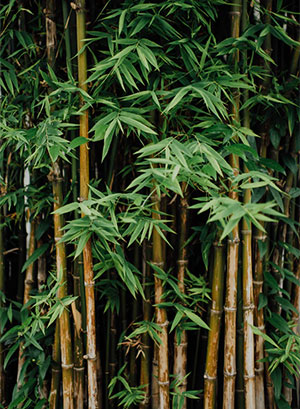
Bamboo
Bamboo is an evergreen foliage plant. Bamboo can be divided into proliferating and non-invasive types. For proliferating bamboo species it is recommended to use a root barrier, otherwise, you run the risk of a bamboo garden developing. The Fargesia is a well-known non-invasive species. Lesser-known varieties are Borinda, Chusquea, and Drepanostachym. Bamboo is suitable for a small or medium-sized garden.
If you want a bamboo forest and you have no neighbors that you have to take into account, I would mainly choose a proliferating species. Progressive species are Arundinaria, Bashania, Brachystachium, Chimonobambusa, Hibanobambusa, Indocalamus, Phyllostachys, Pleioblastus, Pseudosasa, Sasa, Sasaella, Semiarundinaria, Shibataea, and Yushania.
Yucca
The Palm Lily, or Yucca, is suitable for the garden, in a tub, or in the living room. The Yucca Gloriosa is one of the hardiest palm lilies. It gets white flowers on tall flower stems and blooms from July to August.
In general, Yuccas resemble palms in terms of care. They like a sunny spot and lots of moisture and nutrition in the summer. Note that they do prefer dryness and rest in the winter. There are more than 30 types of hardy and non-hardy Palm Lilies available.
Ferns
Ferns are very easy to apply in the somewhat shady places in your tropical garden. If you still want to give them a place in the sun, make sure they get enough moisture. Ferns will make new foliage in the spring. There are no flowering ferns. You have ferns in the dimensions from 15 centimeters to 1 meter in height.
The Blechnum spicant is a low-growing variant, which grows to about 15 centimeters. This is an evergreen fern in the winter. A deciduous species that can reach up to 1 meter in height is Matteuccia Strutiopteris. You don’t need to prune ferns, but you can cut away the withered brown foliage in April. Other well-known types of fern are the Polypodium Vulgare, Asplenium Scolopendrium, and Polystichum Setiferum.
Tropical plants with flowers
You can find loads of varieties, I’ll share some of my favorites with you.
Canna
Canna or canna lily grows to about 1 to 1.50 meters high. They are known for their large red, orange, or yellow flowers. With its dark red/brown color, the foliage is also very attractive among the other green plants. The winter hardiness is under discussion, in a mild winter you can cover them and leave them in the ground. With a somewhat stronger frost, there is a chance that the plant will not survive.
Agapanthus
The African lily is a real eye-catcher and sun worshiper. Put them in a pot on your patio. I happened to come across on the internet that Agapanthus means love. The lily is available in the colors white, blue, dark blue, purple to dark purple. The varieties that lose their leaves in autumn are hardy, the evergreen varieties are not. If your Agapanthus is in a pot, it is wise to bring it inside during the winter.
Albizia julibrissin
This shrub or topiary tree is also known as the Persian silk tree. A very striking and inflorescence is the special feature of this plant. The flowers are bright pink/purple. The shrub/tree is called the silk tree because the leaves fold together half an hour before sunset. A young plant still wants some protection in the winter, after a few years, it can withstand winters better.
There are of course many more types of exotics. Great plants and flowers make a lovely garden to enjoy. Get that holiday feeling in your own garden.

